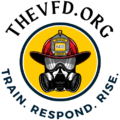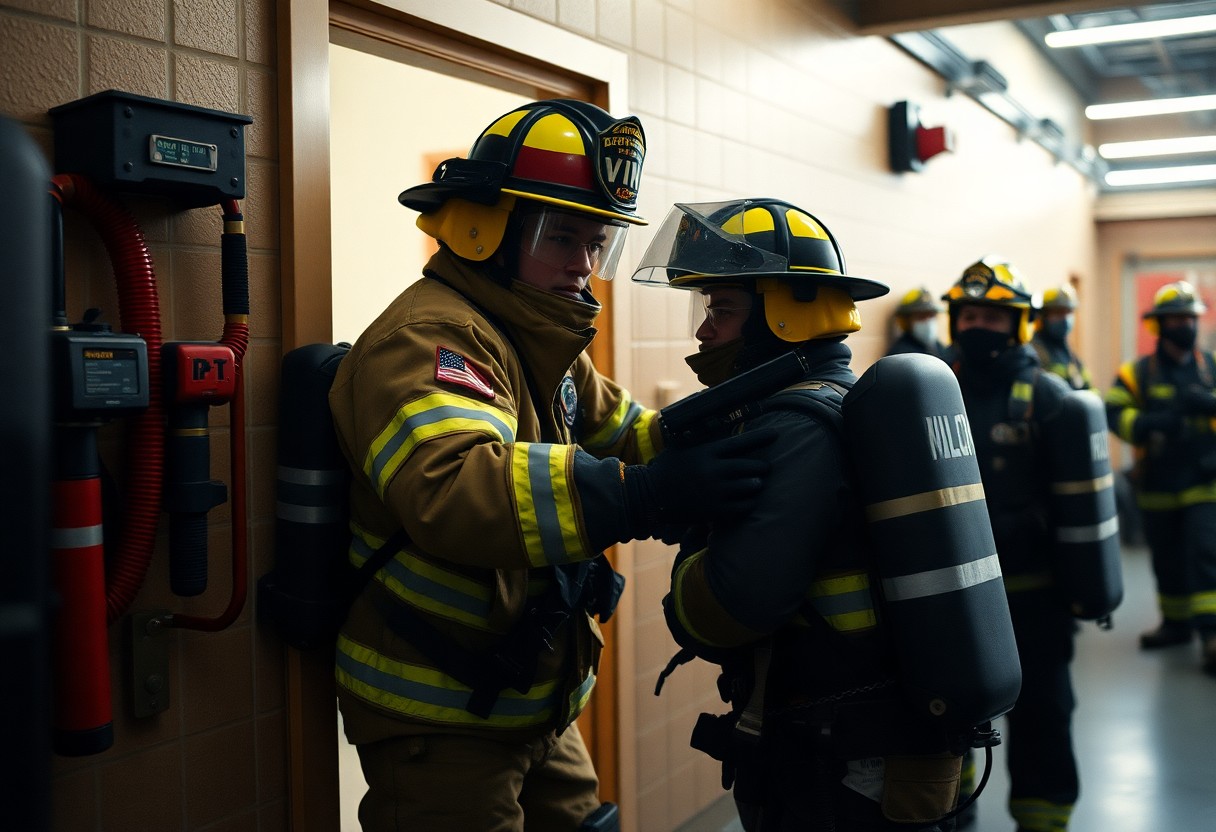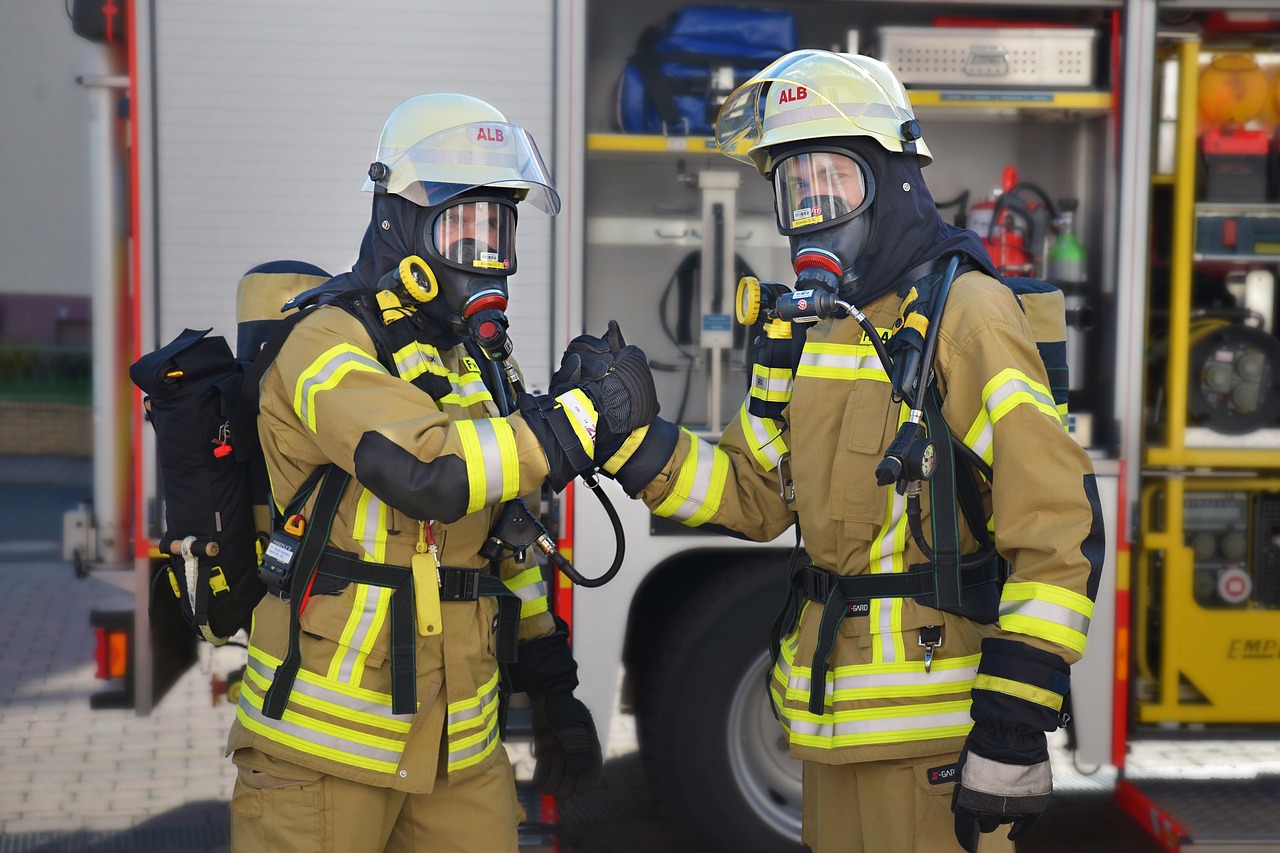Forcible entry training is imperative for you as a volunteer firefighter, equipping you with the skills necessary to effectively and safely gain access to structures during emergencies. Understanding the techniques and tools involved in forcible entry can mean the difference between life and death in rescue situations. This specialized training not only enhances your confidence and efficiency but also helps ensure the safety of your team and the individuals you are dedicated to serving. In this post, we’ll explore the importance of this training and how it can significantly impact your firefighting efforts.
The Importance of Forcible Entry Training
Before engaging in any firefighting operation, effective forcible entry training equips you with the necessary skills to swiftly and safely access buildings in distress. This training not only enhances your operational efficiency, but also ensures that you are prepared to handle various scenarios that may arise in emergency situations, ultimately improving your response to fire incidents.
Enhancing Response Time
Between extensive training sessions and real-life applications, you learn techniques that can significantly reduce the time it takes to gain access to a structure. The quicker you can enter, the sooner you can assess the situation and act, which can be the difference between life and death in emergencies.
Ensuring Firefighter Safety
Safety is paramount in firefighting, and proper forcible entry training greatly enhances your ability to maintain safety for yourself and your team. Understanding how to effectively navigate obstacles and execute entry techniques minimizes the risk of injury, allowing you to focus on your job without unnecessary hazards.
Hence, as you refine your skills in forcible entry, you gain vital insights into proper techniques and safety protocols. This knowledge not only prepares you for physical challenges but also develops your situational awareness, ensuring that you make informed decisions under pressure. Prioritizing safety during forced entry operations ultimately preserves both your well-being and the effectiveness of your firefighting efforts.
Common Techniques for Forcible Entry
Assuming you are familiar with the basic principles of firefighting, you will understand that forcible entry is vital in emergency situations. Effective techniques range from using various physical tools to strategic approaches that assess the structure’s integrity. Learning these methods prepares you to respond efficiently, helping you gain access to save lives and protect property.
Tools Used in Forcible Entry
Above all, the tools you use for forcible entry can make a significant difference in your ability to respond quickly. Often, a combination of hand tools and mechanical equipment is necessary to breach doors or windows. Key tools include:
| Tool | Purpose |
| Axe | Breaking through barriers |
| Pry Bar | Leveraging for door access |
| Halligan Bar | Multipurpose tool for forcible entry |
| Power Saw | Cuts through surfaces |
Techniques for Different Types of Structures
A variety of techniques are crucial for forcible entry, tailored to specific building types. Techniques can vary significantly based on whether you’re dealing with residential homes, commercial buildings, or high-rises. For instance, you may need to consider factors like construction materials, layout, and fire conditions. Here’s a brief overview:
- Residential: Focus on windows, front doors, or side entries.
- Commercial: Look for emergency exits or roll-up doors.
- High-rises: Utilize stairwells and fire escapes for access.
- Secure facilities: Employ specialized techniques to avoid triggering alarms.
- Storage buildings: Test and reinforce weak points before entry.
Assume that understanding these varied techniques will enhance your efficiency as a volunteer firefighter, ensuring you are well-prepared for any structure you may encounter.
| Structure Type | Recommended Technique |
| Residential | Window or door entry |
| Commercial | Enter through loading areas |
| High-rise | Use stairs for access |
| Secure Facilities | Utilize silent entry methods |
| Storage Buildings | Identify weak points for access |
Legal and Ethical Considerations
One of the foundational aspects of forcible entry training for volunteer firefighters involves understanding the legal and ethical boundaries of your actions. When responding to emergencies, you must be aware of the laws governing entry into private properties, as well as the potential repercussions of your decisions on the scene. Proper training helps you navigate these complex issues effectively, ensuring that your interventions are not only effective but also legally sound and ethically responsible.
Understanding Liability
On the subject of legal considerations, liability plays a significant role in the decisions you may face during emergency situations. Familiarizing yourself with the concept of liability will prepare you to handle scenarios where property damage or injuries occur. Being trained in forcible entry techniques ensures that you use the appropriate level of force and have the knowledge to document your actions, protecting both yourself and your department from potential litigation.
Respecting Property Rights
To uphold the community’s trust, it’s crucial to respect property rights while effectively performing your duties as a firefighter. As a volunteer, you are often faced with urgent situations that challenge the balance between immediate safety and respecting individuals’ property. Understanding the nuances of property rights empowers you to make quick, informed decisions, ultimately protecting the rights of civilians while ensuring public safety.
Considerations regarding property rights are vital when executing forcible entry. You must be aware that not all situations warrant breaking down doors or forcing entry into a property. Always evaluate alternative methods of access and seek permission when possible. Awareness of ownership and lawful justifications for entry not only safeguards you legally but also preserves trust and cooperation between your fire department and the community you serve.
Training Programs Available
Keep in mind that various training programs are tailored specifically for volunteer firefighters to enhance their forcible entry skills. These programs often include hands-on scenarios, classroom instruction, and practical assessments designed to prepare you for real-world situations. Engaging in these training opportunities ensures you are well-equipped to respond effectively during emergencies, ultimately benefiting your community.
Local Fire Department Initiatives
One effective way to gain valuable skills is through local fire department initiatives. Many departments offer workshops and training sessions focused on forcible entry techniques, helping you to build a solid foundation. By participating, you not only enhance your abilities but also foster teamwork and camaraderie with fellow firefighters in your community.
National Firefighter Training Organizations
Behind the scenes, national firefighter training organizations play a significant role in setting standards and providing resources for your development. These organizations often offer comprehensive courses that cover advanced forcible entry methods, scenario-based training, and the latest techniques supported by industry best practices.
Training programs provided by national firefighter training organizations typically include online resources, certification courses, and in-person workshops. These resources ensure you stay updated on the latest advancements in firefighting techniques and equipment. By participating in these programs, you not only improve your skills but also expand your professional network, which can be invaluable during emergencies.
Real-Life Applications and Case Studies
Despite the challenges faced in emergency situations, effective forcible entry training has significantly improved response times and resident safety. Case studies reveal real-world applications of these skills:
- Case Study 1: Fire in a residential building, where teams trained in forcible entry reduced time to access by 30%, saving an elderly couple trapped inside.
- Case Study 2: An industrial warehouse fire, with a 40% decrease in injuries among firefighters when using techniques learned in training.
- Case Study 3: Residential fire in a multi-unit dwelling, where rapid entry led to a 50% increase in lives saved compared to previous incidents.
Success Stories from Training
From various training sessions, you can see the impact in real scenarios—one volunteer firefighter reported successfully rescuing a child from a locked room during a house fire, using skills honed during practice drills. This underscores the importance of your preparedness during emergencies.
Lessons Learned from Forcible Entry Scenarios
RealLife examples highlight critical lessons learned in forcible entry situations, showcasing the need for improved techniques and teamwork. For instance, improper use of tools can lead to longer response times and increased risk for all involved. Moreover, communicating effectively with your team is crucial to executing strategies successfully.
Applications of these lessons extend beyond mere methodology; they foster a culture of safety and efficiency. You should analyze past incidents to identify what worked and what didn’t, allowing you to adapt your approach. Emphasizing critical thinking, teamwork, and adaptability will enhance your overall effectiveness during crisis interventions.
Conclusion
Ultimately, forcible entry training is important for you as a volunteer firefighter, equipping you with the skills to effectively gain access during emergencies. This training enhances your safety, increases your effectiveness in firefighting operations, and prepares you for real-life scenarios where every second counts. By mastering these techniques, you not only protect yourself but also ensure the safety of those you serve, allowing for a more efficient and coordinated response during critical situations.



